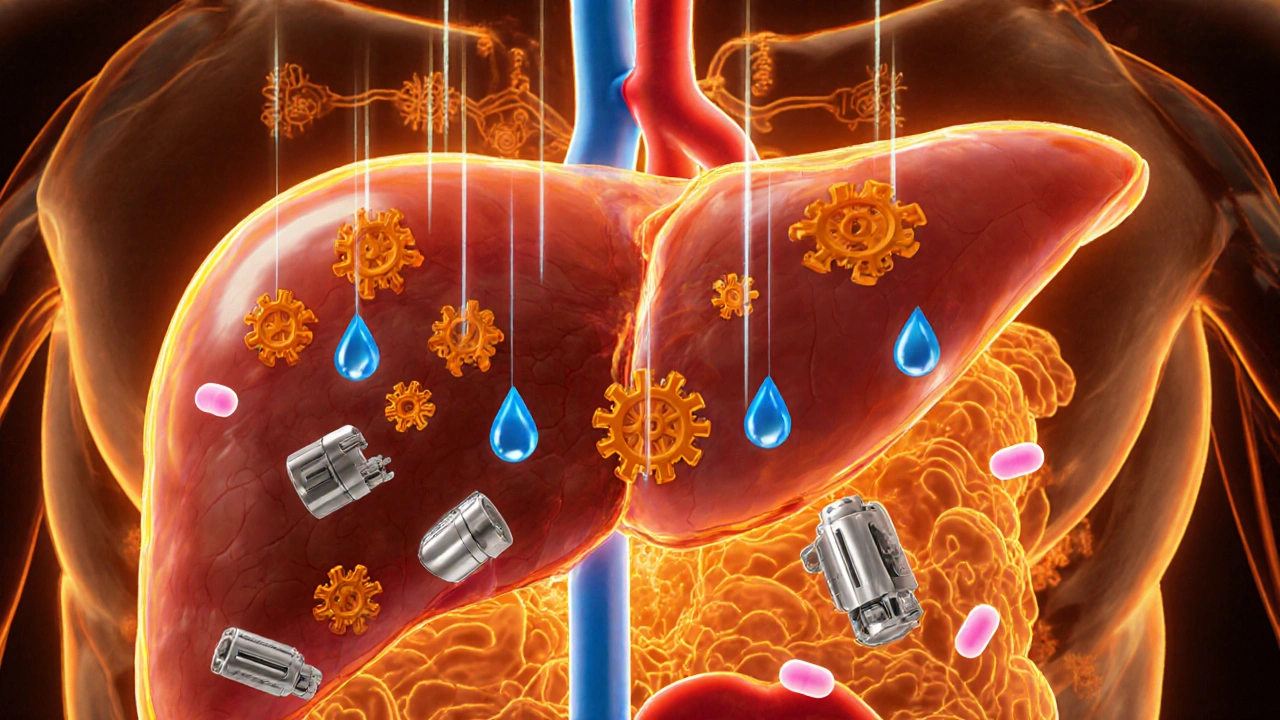Cefuroxime Alcohol Risk Calculator
This tool helps you understand the potential risks of alcohol consumption while taking cefuroxime. Based on medical guidelines, the calculator shows your risk level and important safety considerations.
Risk Assessment
Potential Side Effects
If you’ve been prescribed cefuroxime and wonder whether it’s safe to enjoy a drink, you’re not alone. Many patients ask about the cefuroxime alcohol interaction because they want to avoid unexpected side effects while fighting an infection.
What is Cefuroxime?
Cefuroxime is a second‑generation beta‑lactam antibiotic that works by disrupting bacterial cell‑wall synthesis. It’s commonly prescribed for respiratory, urinary, and skin infections and comes in oral tablets, liquid suspension, and injectable forms. Typical adult dosage ranges from 250 mg to 500 mg every 12 hours, depending on the infection severity.
How Does Alcohol Work in the Body?
Alcohol (ethanol) is metabolized primarily in the liver by the enzyme alcohol dehydrogenase (ADH), converting it to acetaldehyde, which is then processed by aldehyde dehydrogenase (ALDH) into acetate. The process consumes NAD⁺ and generates NADH, temporarily altering the liver’s capacity to handle other substances, including many medications.
Why Mixing Cefuroxime and Alcohol Raises Concerns
Both cefuroxime and alcohol rely on liver pathways for elimination, but they use different enzyme systems. While cefuroxime is excreted largely unchanged through the kidneys, a small fraction undergoes hepatic metabolism via cytochrome P450 (CYP450) enzymes, especially CYP3A4. Alcohol consumption can inhibit or saturate these enzymes, leading to higher circulating levels of the antibiotic. Elevated cefuroxime concentrations increase the likelihood of side effects such as gastrointestinal upset, rash, or, in rare cases, hematologic changes. Moreover, alcohol’s immunosuppressive effects may blunt the body’s ability to fight the infection, subtly reducing treatment efficacy.

Potential Risks and Side Effects
- Gastrointestinal irritation: Alcohol already irritates the stomach lining; combined with cefuroxime, patients often report nausea, vomiting, or abdominal cramps.
- Increased risk of allergic reactions: Both substances can trigger histamine release, leading to rash, itching, or even hives in sensitive individuals.
- Liver strain: Heavy drinking taxes the liver’s detox pathways, potentially slowing the clearance of cefuroxime metabolites and raising liver‑enzyme levels.
- Diminished antibiotic effectiveness: Alcohol can impair white‑blood‑cell function, making it harder for the immune system to collaborate with the drug.
- Potential for dizziness and low blood pressure: Both cefuroxime and alcohol can cause vasodilation; together they may produce light‑headedness, especially when standing up quickly.
Practical Guidelines for Safe Use
- Know the timing: Aim to finish any alcohol intake at least 24 hours before starting a cefuroxime course. If you’re already on the medication, wait until you’ve completed the full prescription before drinking.
- Limit quantity: If you choose to drink, keep it to a single standard drink (≈14 g of pure alcohol) and monitor how you feel. Avoid binge drinking or mixing with other sedatives.
- Stay hydrated: Adequate water intake helps the kidneys flush out cefuroxime more efficiently and reduces the concentration of alcohol metabolites.
- Watch for red‑flag symptoms: Seek medical attention if you notice severe stomach pain, persistent vomiting, yellowing of the skin or eyes, or an unexplained rash.
- Consult your prescriber: Some patients-particularly those with liver disease, chronic alcoholism, or on other CYP450‑affecting drugs-should avoid alcohol entirely while on cefuroxime.

Quick Comparison of Alcohol Levels and Risks
| Alcohol Intake | Likelihood of GI Upset | Liver Strain | Impact on Antibiotic Effectiveness |
|---|---|---|---|
| None | Low | Minimal | None |
| Light (≤1 drink/day) | Moderate | Low‑to‑moderate | Slight |
| Heavy (>3 drinks/day) or binge | High | Significant | Noticeable reduction |
Bottom Line
The safest route is to avoid alcohol for the duration of your cefuroxime treatment, especially if you have a history of liver problems or are prone to allergic reactions. If a single drink is unavoidable, keep it light, stay hydrated, and watch your body’s signals. Always check with your healthcare provider for personalized advice.
Can I have a glass of wine while on cefuroxime?
A small glass (about 5 oz) is unlikely to cause severe problems for most healthy adults, but it may increase mild stomach upset. If you have liver disease or notice any adverse symptoms, skip the wine.
Does alcohol reduce the effectiveness of cefuroxime?
Alcohol can slightly dampen the immune response, which may make the antibiotic work a bit slower. The effect is usually modest, but heavy drinking can become a real concern.
What side effects should I watch for?
Watch for nausea, vomiting, rash, yellowing of the skin or eyes, severe dizziness, or unexplained fever. Any of these warrant a call to your doctor.
Is it safe to take cefuroxime if I’m a recovering alcoholic?
Because the liver is already under stress, it’s best to avoid alcohol completely during the course. Discuss alternative antibiotics with your prescriber if you’re concerned about interactions.
How long after finishing cefuroxime can I drink again?
Wait at least 24 hours after the final dose to give your body time to clear the drug. If you’ve taken a longer course, a 48‑hour window is a safer bet.







Write a comment
Your email address will be restricted to us